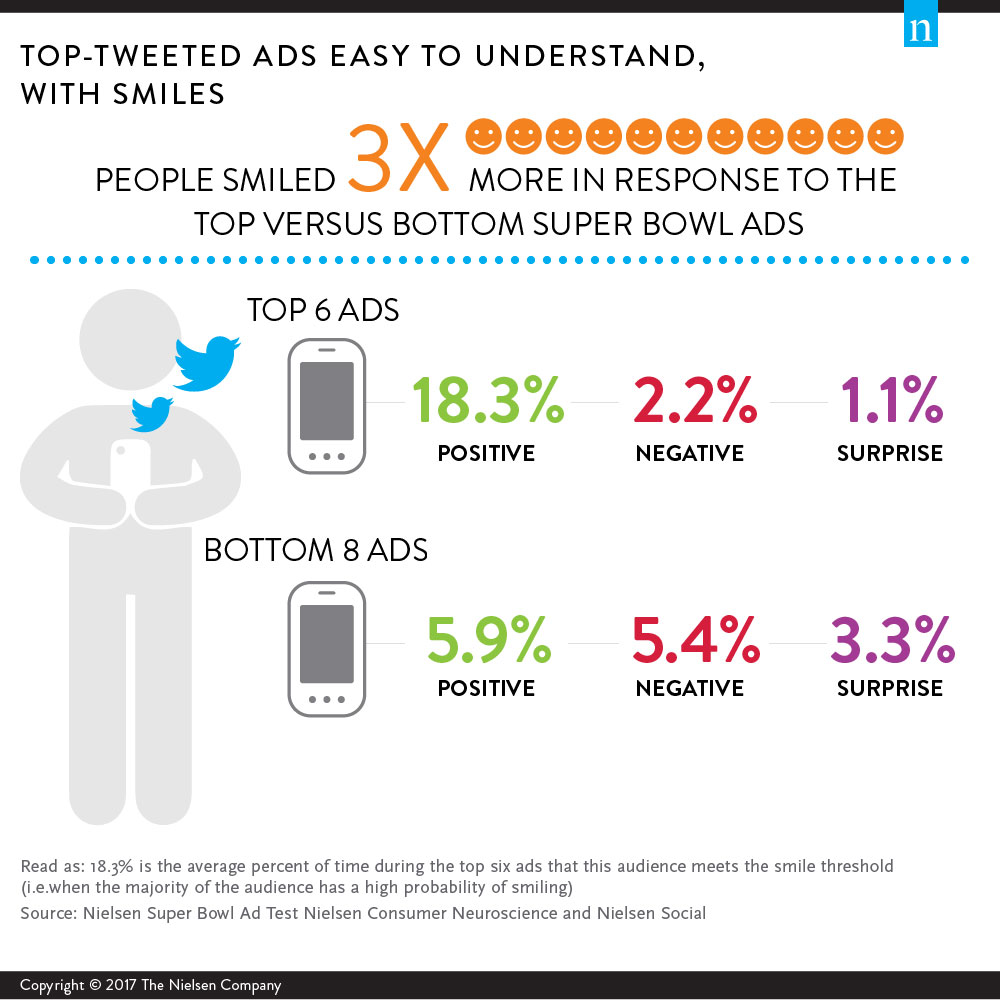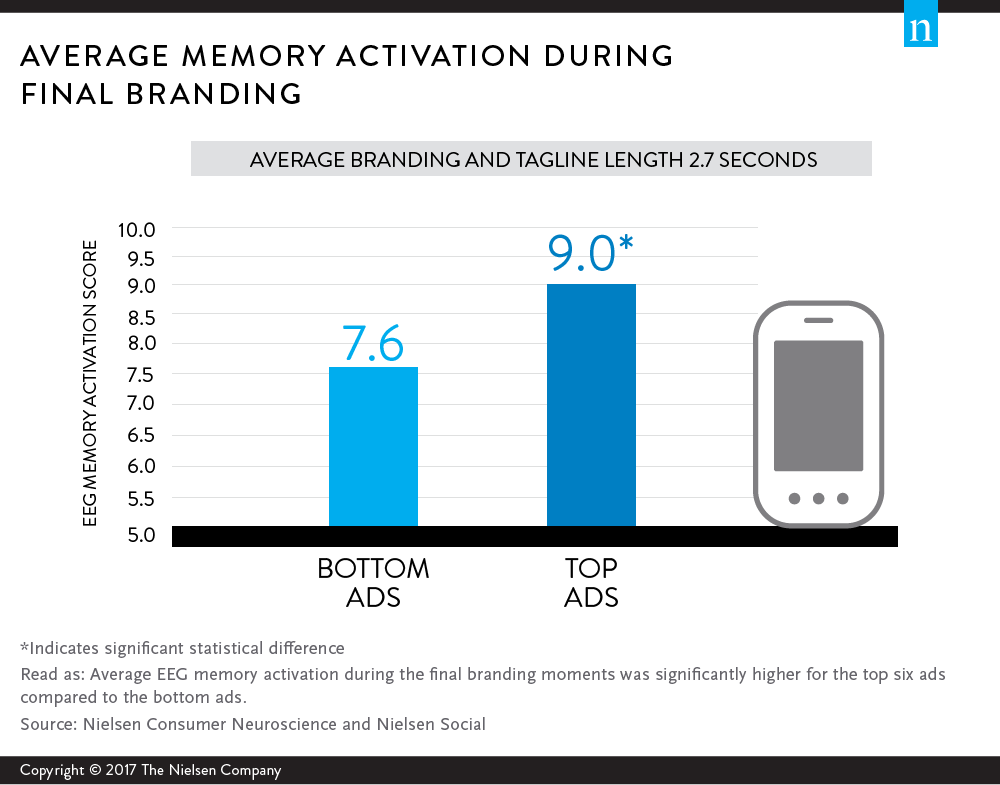For football and non-football fans alike, the ad competition for consumers’ hearts and minds shares center stage with the game on the field during Super Bowl Sunday. The ads not only enhance the overall excitement on game day, but they also rally fans on social media before, during and after the big game. So what makes some ads more socially captivating than others? And how can brands know whether their creative will drive social activity—before it ever runs?
With 30-second spots going for around $5 million and with more than 100 million viewers tuning in, advertisers and marketers need to know what strikes an emotional chord and what drives engagement across social media to further amplify their message and optimize the value of their creative.
To find out, Nielsen Consumer Neuroscience partnered with Nielsen Social and TV Brand Effect to look at the relationship between engagement metrics and the most- and least-Tweeted ads that aired during last year’s Super Bowl. The study focused on 14 Super Bowl ads, which were analyzed using EEG, facial coding and self-reported recall and brand linkage measures.
The results? Top-Tweeted ads, compared with those that generated the least number of Tweets, showed a pattern of EEG that suggested they were easier to process (particularly in the first moments), had strong memory activation during final branding and generated more smiles overall. Viewers also were able to recall the top-Tweeted ads more and were more likely to link them correctly to the brand than the least-Tweeted ads after the game. In contrast, low-Tweeted ads showed a pattern consistent with confusion early on, suggesting the ads were more complex to process and had fewer intuitive moments than those with high Twitter activity and had significantly lower recall and brand linkage scores.

In looking at the study data, the results suggest that the ads that were most successful at generating Twitter activity:
- Were more effortless to watch in the beginning;
- Engaged the viewer emotionally early on;
- Ended with a strong memory association to clear branding; and
- Generated more smiles.

So how did some of the top Tweeted ads of 2017 stack up? Looking through the lens of the 2016 Super Bowl ad findings, this year’s most-Tweeted ads, including Mr. Clean’s “Cleaner of Your Dreams,” Audi’s “Daughter,” and Buick’s “Pee Wee Commercial with Cam Newton & Miranda Kerr,” rang true with our findings. P&G’s “Cleaner of Your Dreams” featured an iconic character doing what he does best, cleaning with flair. The ad was easy to process, engaged the viewer early on, and ended on a humorous note featuring the brand. Buick’s “Pee Wee” ad was another easy narrative that integrated football with cute kids and star power that also ended with humor. And Audi’s “Daughter” featured a well told story that was emotionally engaging, easy to process and ended with an aspirational moment of connection with clear branding.
These methods of ad testing can be used well before game time to help mitigate the risk of placing such a big bet on big events. By pre-testing ads, it’s possible to know what’s going to resonate with viewers and what’s not, making every second count and ensuring the ad scores big.
Methodology
Nielsen Consumer Neuroscience and Nielsen Social conducted this study to explore the relationship between high- and low-volume Twitter activity. Fourteen Super Bowl ads in 2016, including six top ads averaging 44,378 Tweets, and eight bottom ads averaging 2,070 Tweets, were examined post-game using EEG, facial coding and Nielsen TV Brand Effect. The 14 ads were limited to 30-second spots during the game (excluding pre-game and half-time show) and excluded movie promos.
